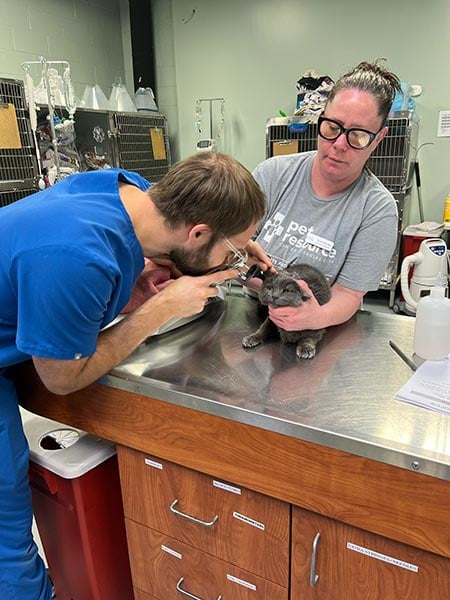Ear infections are one of the most common health issues seen in pets. While they might seem like a minor annoyance at first, untreated ear infections can lead to significant discomfort—and in some cases, permanent damage. Knowing what to look for, how to prevent them, and when to seek veterinary care can make all the difference in your pet’s long-term health and happiness.
How Common Are Ear Infections?


Studies show that up to 20% of dogs and around 7% of cats will experience an ear infection at some point in their lives. These infections are typically caused by bacteria, yeast, or parasites, and can be triggered or worsened by several contributing factors such as:
- Environmental allergies or food sensitivities
- Excess moisture (like after swimming or bathing)
- Hormonal imbalances or immune disorders
- Foreign bodies (grass seeds or debris lodged in the ear)
- Trauma from excessive scratching or head shaking
Certain breeds are also more susceptible. Dogs with floppy or hairy ears, such as Cocker Spaniels, Basset Hounds, Poodles, and Golden Retrievers, tend to be at higher risk due to the limited airflow and increased moisture retention in their ear canals.
Signs of an Ear Infection

Catching an ear infection early can save your pet from pain and help avoid more serious complications. Keep an eye out for these common symptoms:
- Frequent head shaking or tilting
- Scratching or pawing at the ears
- Redness, swelling, or visible irritation inside the ear
- A foul odor coming from the ear
- Dark discharge or excessive wax buildup
- Crusting or scabbing around the ear opening
- Signs of discomfort when the ear is touched
In more severe or chronic cases, pets may develop balance issues, display signs of hearing loss, or even experience infections that spread to the middle or inner ear, potentially leading to long-term damage.
Prevention Tips

The good news? Many ear infections can be prevented with regular care and awareness. Here are a few steps you can take at home:
- Keep ears clean and dry, especially after baths or swimming.
- Use a veterinarian-recommended ear cleaner formulated for pets.
- Avoid using cotton swabs, which can push debris further into the ear canal.
- Regularly check your pet’s ears for signs of redness, swelling, or odor.
- Address allergies and other underlying health conditions that may contribute to chronic infections.
- Schedule routine veterinary checkups, especially if your pet is prone to ear issues.
Treatment Options
If you suspect your pet has an ear infection, it’s important to have them seen by a veterinarian. Treatment will depend on the type and severity of the infection:
- Mild infections may be resolved with gentle ear cleaning and a topical medication.
- Moderate to severe infections often require oral antibiotics, antifungals, or anti-inflammatory medications.
- For pets with chronic ear issues, your vet may investigate deeper underlying causes, such as allergies, endocrine disorders, or anatomical abnormalities.
Prompt and proper treatment not only helps relieve your pet’s discomfort but also reduces the risk of recurrence.
At Pet Resource Center of Kansas City, we’re here to support your pet’s health at every stage of life. If your pet is showing signs of an ear infection or you’re unsure how to clean their ears safely, reach out to our veterinary team. With a little preventive care and quick action, you can help keep your pet’s ears healthy and pain-free.


